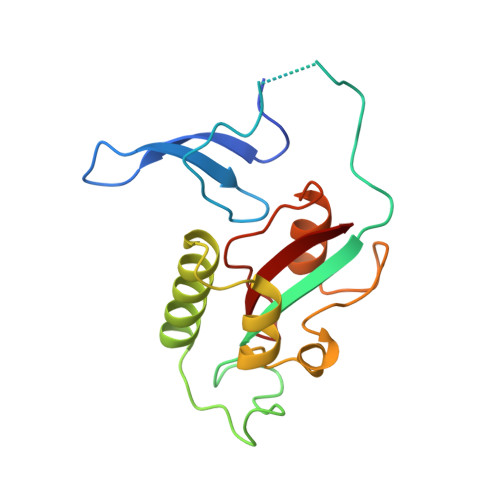Structural and functional analysis of the mitotic rotamase Pin1 suggests substrate recognition is phosphorylation dependent.
Ranganathan, R., Lu, K.P., Hunter, T., Noel, J.P.(1997) Cell 89: 875-886
- PubMed: 9200606
- DOI: https://doi.org/10.1016/s0092-8674(00)80273-1
- Primary Citation of Related Structures:
1PIN - PubMed Abstract:
The human rotamase or peptidyl-prolyl cis-trans isomerase Pin1 is a conserved mitotic regulator essential for the G2/M transition of the eukaryotic cell cycle. We report the 1.35 A crystal structure of Pin1 complexed with an AlaPro dipeptide and the initial characterization of Pin1's functional properties. The crystallographic structure as well as pH titration studies and mutagenesis of an active site cysteine suggest a catalytic mechanism that includes general acid-base and covalent catalysis during peptide bond isomerization. Pin1 displays a preference for an acidic residue N-terminal to the isomerized proline bond due to interaction of this acidic side chain with a basic cluster. This raises the possibility of phosphorylation-mediated control of Pin1-substrate interactions in cell cycle regulation.
Organizational Affiliation:
Structural Biology Laboratory, The Salk Institute for Biological Studies, La Jolla, California 92037, USA.


















